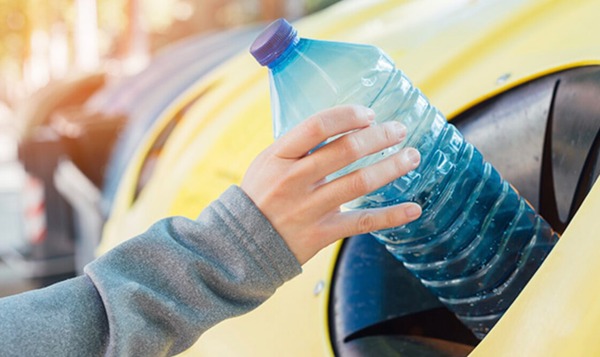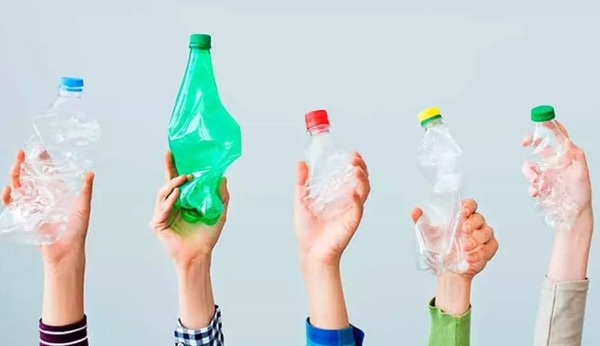To think of a world without plastics is practically a utopia. However, at the beginning of the last century, the world was already familiar with products made from plastics. The production of synthetic organic polymers dates back to 1950.
Since then, the industry has grown dramatically to the point that the planet is greatly affected by the waste of this type of material and the lack of information that people have about the real ways to recycle. Here we will tell you if the plastic gets recycled.
How much plastic actually gets recycled?
According to recent research, as of May 2022, between 5% and 6% of plastic is recycled. The 2018 figure was 9%. Also, we must explain that there are about 80,000 types of plastic resins, of which 4 types end up being recycled. The rest is challenging to recycle because it requires more complex processes.
The study was conducted by Beyond Plastics and The Last Beach Cleanup (a California-based non-profit organization led by Jan Dell, an expert chemical engineer). According to what was revealed, of the 46 million tons of plastic waste generated annually in the United States, only that percentage is recycled.

In other words, instead of moving towards a world where recycling is advancing, in the last 5 years, the opposite has occurred. In this sense, experts point out that if we consider the plastic waste collected under the pretext of “recycling,” which is burned, the rate could be much lower.
Following the above, it is worth noting that the EPA still needs to update its recycling figures. The latest information dates from 2020 when the percentage of plastics recycled was 8.7%, data based on an estimate of 2018 numbers. In other words, the figures are not entirely clear when it comes down to it.
Is it possible to recycle plastic?
This is a very common question; unfortunately, the answer is not positive. Recycling plastic is very complicated, and the situation is becoming increasingly complex. While 52% of recycling centers in the U.S. accept plastic materials, research indicates that less than 5% is reusable, and the remainder ends up in landfills, i.e., completely discarded.
Furthermore, the renowned non-profit organization, Greenpeace, revealed that in the U.S., not even soft drink bottles, a widespread item in recycling garbage cans, reached the point of being considered recyclable, according to the standards of Ellen MacArthur’s New Plastic Economy Foundation.
In reality, plastic would have to have an estimated recycling rate of 30% to meet the standard, but the data still needs to reach such a figure.
What are solutions for recycling?
There are several alternatives for recycling. Here are 3 ways to recycle correctly:
- Clean soda cans and bottles. It is an ideal way to dry the paper in the recycling garbage can. This way, much more can be recycled.
- Do the same with the food containers you are going to recycle. It is the same as in the previous point: the container lasts longer. Therefore, when recyclable items are clean, it is possible to recycle more things.
- Compost your leftover food. Homemade compost is an excellent solution for recycling and caring for the environment. You can compost with banana peels, coffee, leftovers from caves and vegetables, etc. This keeps materials out of landfills, plus your home or farm soil will have more nutrients.
Where does plastic recycling really go?
So, what happens if the plastic you left in the recycling garbage can wasn’t recycled? Well, the reality is that many issues can occur.
For example, plastic waste that is transported from one continent to another, as is often the case, rarely ends up being recycled when it arrives at its destination. What ends up being generated are illegal and gigantic dumps of plastic that are burned. This implies more significant damage to the planet.

There are even documentaries on streaming platforms where this type of situation is narrated. Many times, plastic industries send their waste to South Asian countries, where communities end up being seriously affected, generating health problems.
Another case is that plastic recycling becomes “Downcycling.” When plastic is somehow managed to be recycled, sometimes this is the correct term. For example, we see this when you buy a plastic bottle and on the bottom is a symbol with three interlocking arrows.
While this is thought to indicate that it is a recycled product, it means nothing of the sort. On the contrary, the numbers you see on the object are codes indicating the type of plastic used to manufacture it. However, the numbers and arrows create a false idea that is important to know in order to avoid deception.
Which Plastic Can Be Recycled?
Among the types of plastics that can be recycled, we have:
- PET (Polyethylene Terephthalate)
- HDPE (High-density Polyethylene)
- PVC (Polyvinyl Chloride)
- LDPE (Low-Density Polyethylene)
- P.P. (Polypropylene)
- P.S. (Polystyrene)
In summary, while the recycling rate has increased in the U.S., there is still a long way to go to reach accurate levels of plastic reuse. Therefore, it is always good to be educated on the subject and to inform the community about the best ways to recycle.